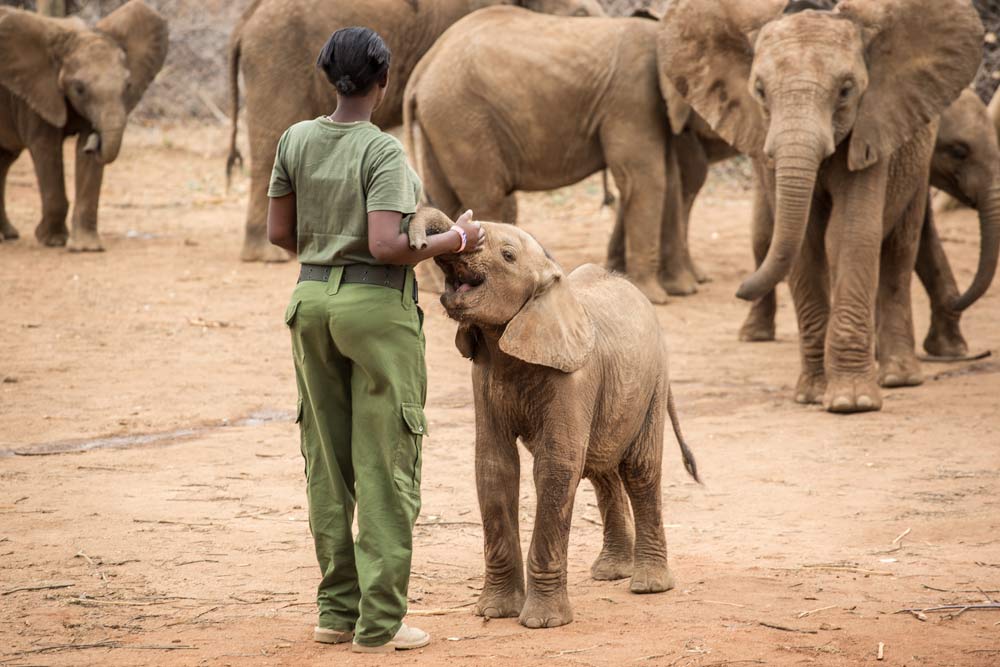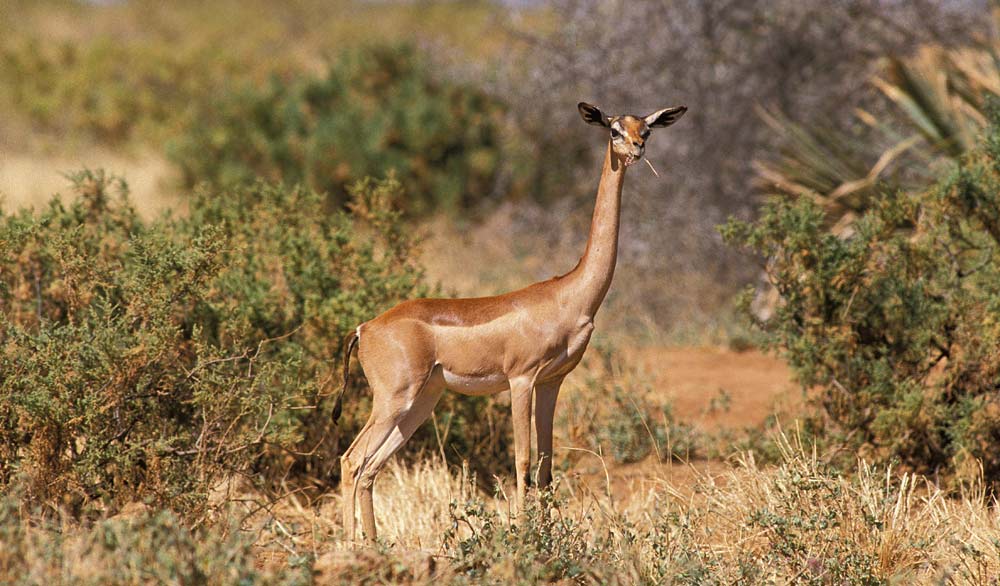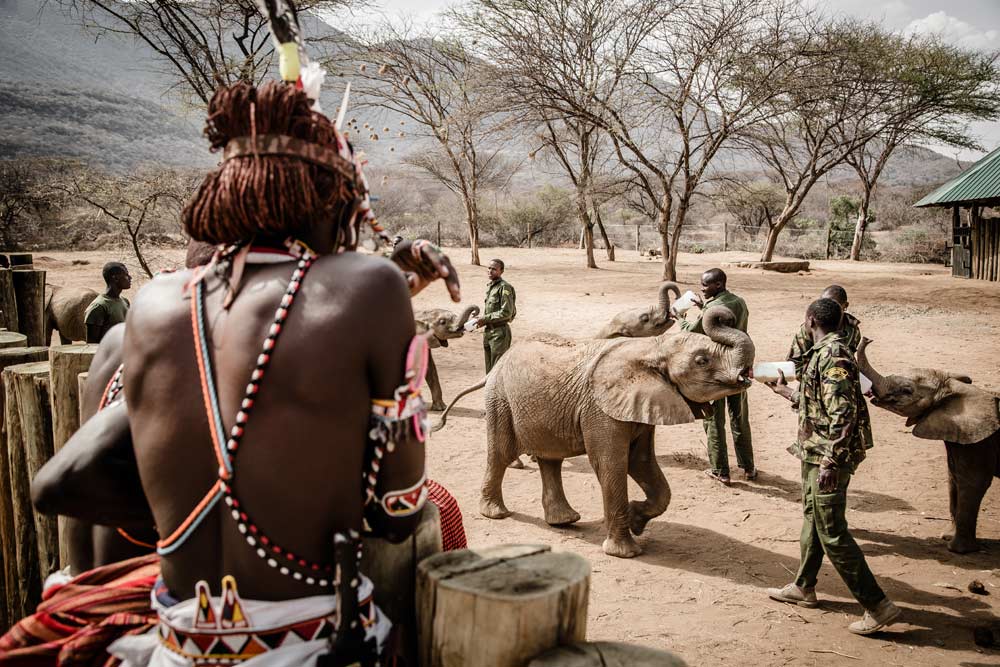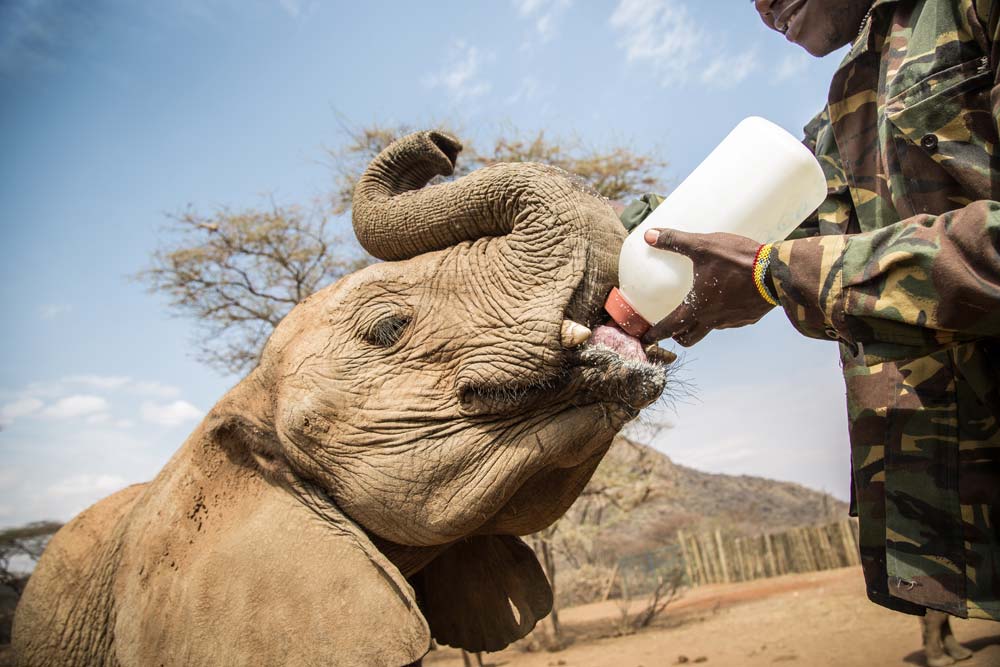‘My human family is at home,’ says the young Samburu mother, ‘but I’m also mother to another set of babies.’ She points to a herd of around a dozen young elephants. Some are tiny tots and others stand as high as a man. A softly probing elephant trunk wraps itself around Josephine’s waist. She laughs as it explores deep into her pocket in search of treats. I’m in northern Kenya spending a day at the Reteti Elephant Sanctuary. And it’s not far off feeding time.

Anticipation mounts as the baby elephants career across the landscape, causing plumes of red dust to dance off into the bush. Now they’re chasing each other around a clump of trees – trunk to tail. There’s a splishing and splashing of water as they career through a muddy pool. They’re like any other children on earth – only larger.
Kenya’s Northern Frontier
A place of sun-baked earth, rust-red dust, scrubby thorn and vast, theatrical skies, Northern Kenya lies far from the well-beaten tourist track. Its empty vastness rolls away, unchecked, all the way to Lake Turkana and it glances only fleetingly off the boundaries of the much more famous Samburu National Reserve. Not many visitors make it out here. At first glance, you could be forgiven for wondering why they come at all. The landscape appears inhospitable in the extreme. But for all this, Northern Kenya shelters a rare and magnificent wildlife cast.

Here, in this desiccated region, roams the rare reticulated giraffe and the critically endangered Grevy’s zebra. Here too patrols the rare blue-shanked Somali ostrich and the bizarrely long-necked gerenuk. This is also an increasingly popular hideaway for the threatened wild dog or ‘painted wolf’. And finally, the wild reaches of the land – known romantically as ‘the Northern Frontier District’ – provides sanctuary for one of the largest and most nomadic elephant populations in Kenya.
Elephants on the move
Due to the paucity of food and water, the elephants are always on the move. Their ceaseless wanderings take them from the chilly moorlands bordering Mount Kenya to the volcanic uplands of Marsabit. Along the way, they pass through parchment-dry acacia scrub and bone-dry river gullies before eventually reaching the dripping-wet, mist-wreathed forests of the mountain ranges. It’s a journey of hundreds of kilometres, and it forces them to encounter hazards ranging from humans to fences, and from wells to roads. Inevitably there are mishaps along the way, and numerous baby elephants are left orphaned every year. These are the denizens of Reteti Elephant Sanctuary.
It was in 2016 that Reteti Elephant Sanctuary, the first of its kind to be entirely community owned and managed, was established in the forested foothills of the little-known Matthew’s Range of mountains, which lie a couple of hours’ drive north of the Samburu National Reserve. Here, the formation of numerous community conservancies has done much to reduce both the poaching of wildlife and the incidence of human-versus-wildlife conflict. Indeed, since 2012 an impressive 53% fall has been registered in the number of elephants killed by poachers in northern Kenya. This is a triumph of conservation.
Josephine’s babies
Eying her surrogate babies at play, Josephine tells me that it was the sad plight of the orphans that initially spurred her community into action. ‘Many babies came to us as a result of accidents,’ she says. ‘Quite a few fall down wells and have to be rescued. We bring them here to recover though our aim is to return them to the wild if we can.’ As she speaks, her babies are becoming increasingly boisterous in their demands for attention. ‘They’re getting excited,’ she says, ‘they know it’s nearly time for their afternoon milk.’

At the mention of the word ‘milk’ five or six men in military fatigues march into our midst. Each burly man carries an over-sized baby’s milk bottle with a large pink teat. It’s a surreal scene. The bright eyes of the baby elephants lock on to the bottles and sudden pandemonium breaks out. They rush en masse towards their feeders. Amid the gulping and sucking that ensues, two Samburu warriors arrive to watch. They’re gorgeous in extravagant feathered headdresses and festooned in multiple strings of rainbow-coloured beads. At first their faces remain inscrutable. Then they register mild curiosity. Finally they split into broad grins.

And yet, just a few short years ago, such warriors would have regarded even these enchanting baby elephants as potential threats. And, rather than smiling upon them, they might have been more inclined to drive them away: or kill them. Happily, times have changed. Now the northern communities have banded together in defence of the elephants that share their impossibly arid environment. And the future looks bright for community and elephants alike.
Need to know
Visits to the Sanctuary can be easily arranged by most of the camps and lodges in the vicinity.
The author flew in to Nairobi from Europe with Kenyan flag-carrier, Kenya Airways and the sanctuary can be reached via airstrips at Kalama or Samburu, both of which are served by Airkenya.
For further information: www.retetielephants.org
© 2025 Kenya Holidays
